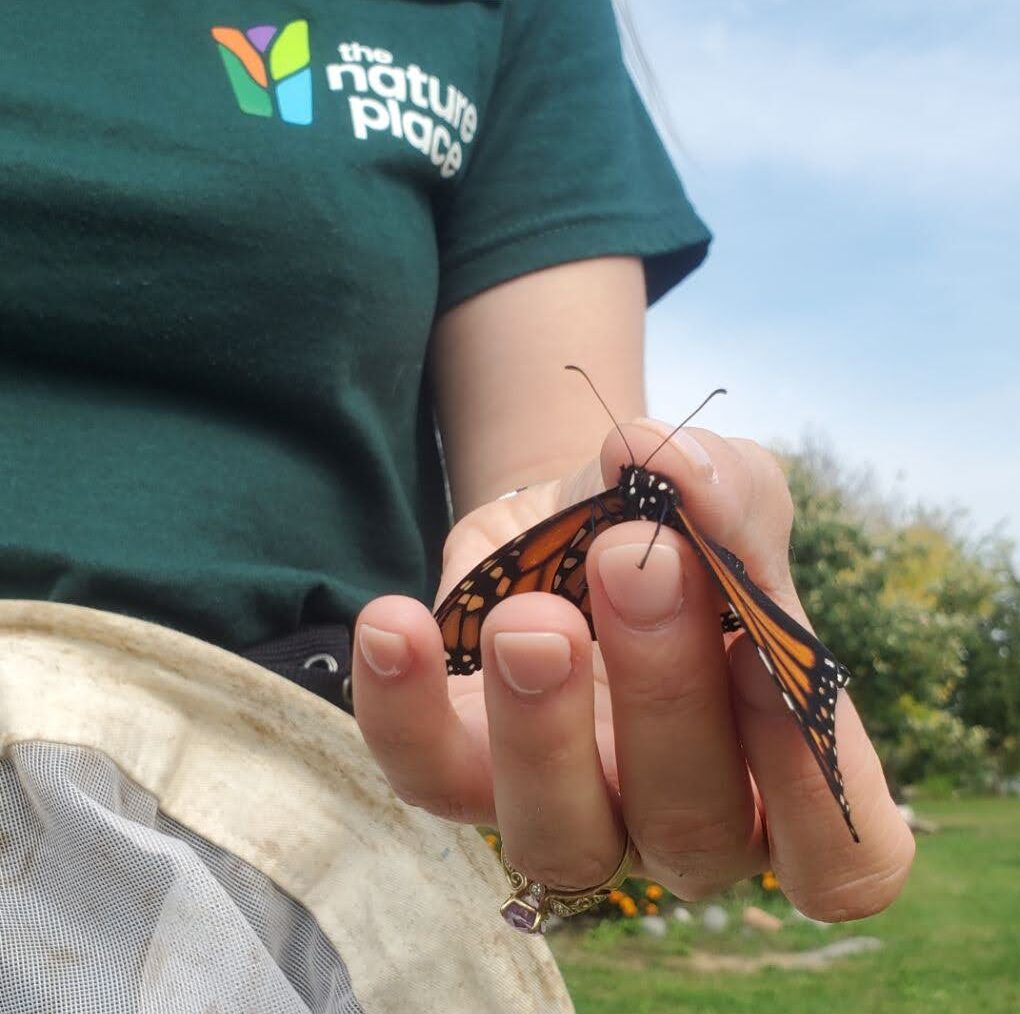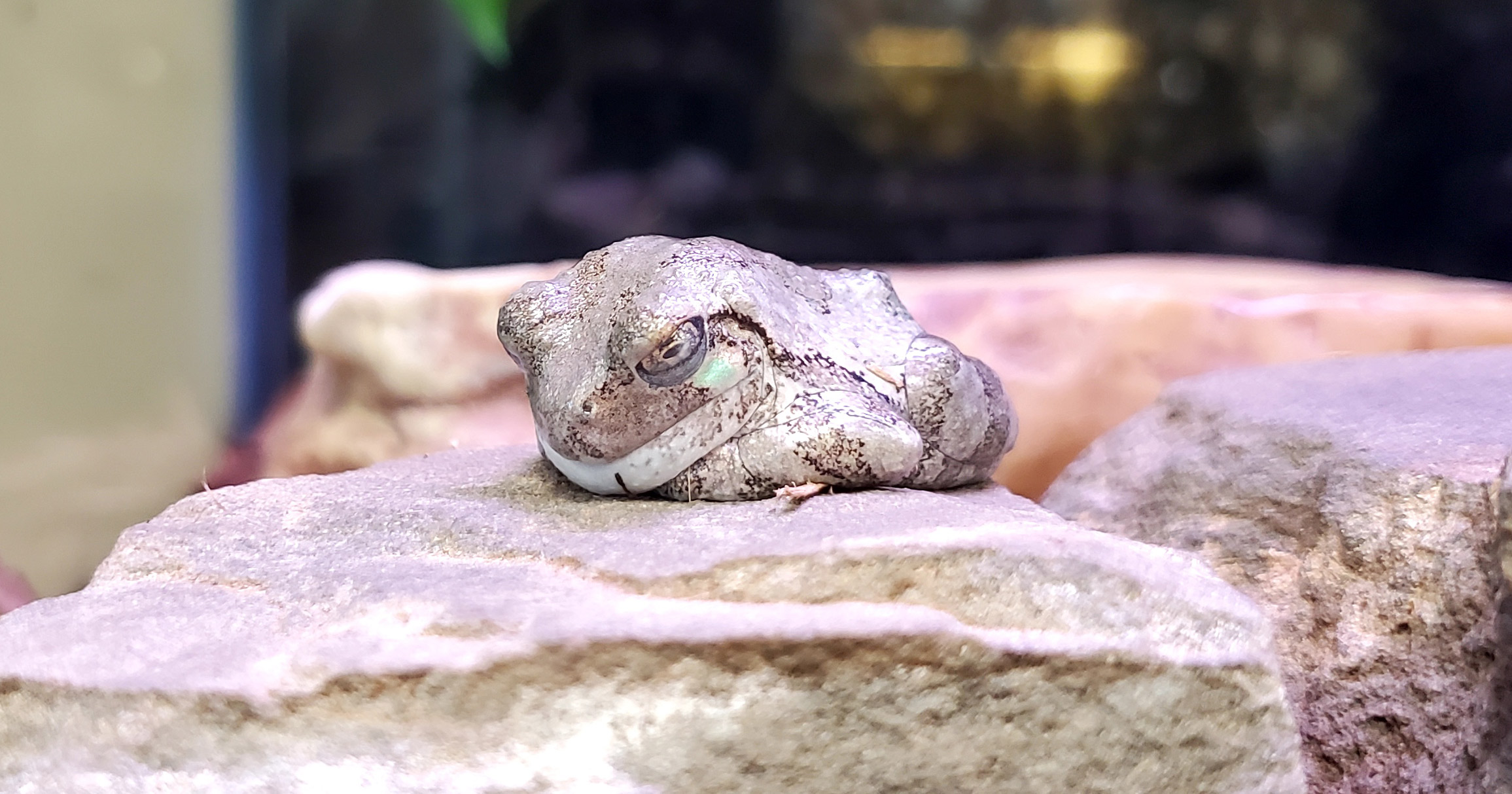Community Science serves as a bridge between academic research and the community-at-large. The program creates collaborative spaces for research between professional and community scientists and creates a more engaged, knowledgeable and ecologically literate community.
Community members and staff at The Nature Place are involved with the following community science programs and plan to expand community science opportunities in the future.


The Driftless Area BioBlitz
A bioblitz is a community science effort to record as many species within a designated location and time period as possible. The Nature Place partners with donors, the Viterbo University Biology Department, the University of Wisconsin-La Crosse Biology Department, Mississippi Valley Conservancy, and the City of La Crosse Parks, Rec and Forestry on the Driftless Area BioBlitz (DABB). DABB uses iNaturalist which is a joint initiative by the California Academy of Sciences and the National Geographic Society. It is a social network of naturalists, community scientists, and biologists built on mapping and sharing biodiversity observations across the globe. iNaturalist may be accessed via its website or from its mobile applications. DABB is a free, annual, one-of-a-kind, opportunity for families, students, and all nature lovers to search for and learn about plants and wildlife in the Driftless Area.
Each year, from January to December, people can participate by submitting observations of wild organisms from anywhere in the Driftless Area using iNaturalist. The Driftless Area includes areas in Wisconsin, Minnesota, Illinois, and Iowa which are free from glacial drift and seem not to have been covered by the Pleistocene ice.
Monarch Watch
The Monarch Watch Tagging Program is a large-scale community science project initiated in 1992 to help understand the dynamics of the monarchs' spectacular fall migration through mark and recapture. Tagging helps answer questions about the origins of monarchs that reach Mexico, the timing and pace of the migration, mortality during the migration, and changes in geographic distribution. It also shows that the probability of reaching Mexico is related to geographic location, size of the butterfly, and the date (particularly regarding the migration window for a given location). Each fall, a quarter of a million tags are distributed to thousands of volunteers across North America who tag monarchs as they migrate through their area. These volunteers capture monarchs throughout the migration season, record the tag code, tag date, gender of the butterfly, and geographic location, then tag and release them. At the end of the tagging season, these data are submitted to Monarch Watch and added to a database for research.
Tagging in Myrick Park started in September 2022 and we will share if any are recovered in Mexico.


Wisconsin Frog and Toad Survey
The Nature Place partners with the Friends of the La Crosse River Marsh yearly to do this survey. Amphibians are one of the clearest indicators of environmental well being. This survey is done following Wisconsin Dept of Natural Resources guidelines, three times a year, with the timing determined by water temperature. Volunteers visit set places in the marsh and listen. No experience is needed. Check out their website for more information.
Great Backyard Bird Count
The Nature Place partners with the Friends of the La Crosse River Marsh yearly to do this count. The Great Backyard Bird Count ( GBBC ) is a vehicle for monitoring the extent, health, and movement of bird species and populations. This is a joint project of the Cornell Lab of Ornithology, the National Audubon Society, and Bird Studies Canada. Participants are invited to come to The Nature Place and help count in our “backyard”: the La Crosse River Marsh. The GBBC takes place in mid February for a few days. Folks can also count in their backyard. Find out more by clicking the link below.


Audubon Christmas Bird Count
Since 2018, The Nature Place staff has helped the Coulee Region Audubon Society with the nation's longest-running community science bird project: the Audubon Christmas Bird Count. This count helps fuel Audubon's work throughout the year. It is an early-winter bird census where thousands of volunteers across the US, Canada and many countries in the Western Hemisphere, go out over a 24 hour period to count birds.
Have you recently attended a program with us? Your feedback helps us to continually improve!
Want to join The Nature Place and partners to do family friendly community science?
Contact Cindy Blobaum, Environmental Education Program Manager, at cindy.blobaum@natureplacelacrosse.org or Stephanie Hanna, Community Programs Manager at steph.hanna@natureplacelacrosse.org

